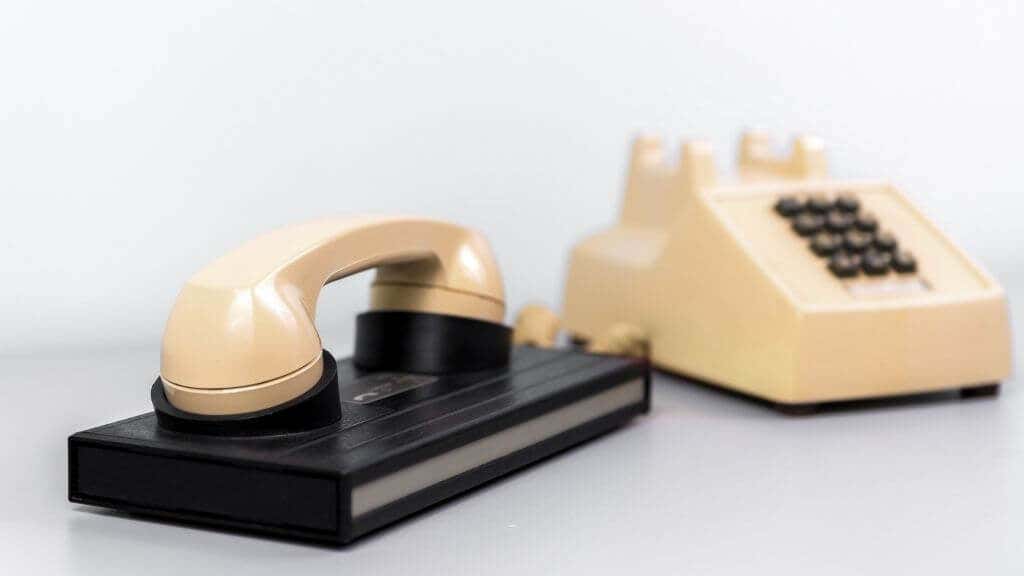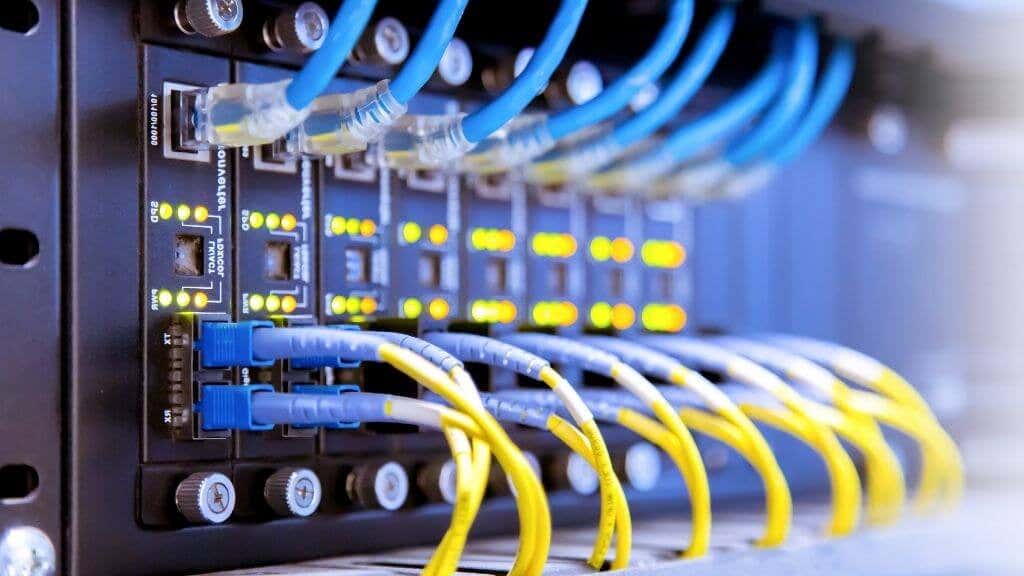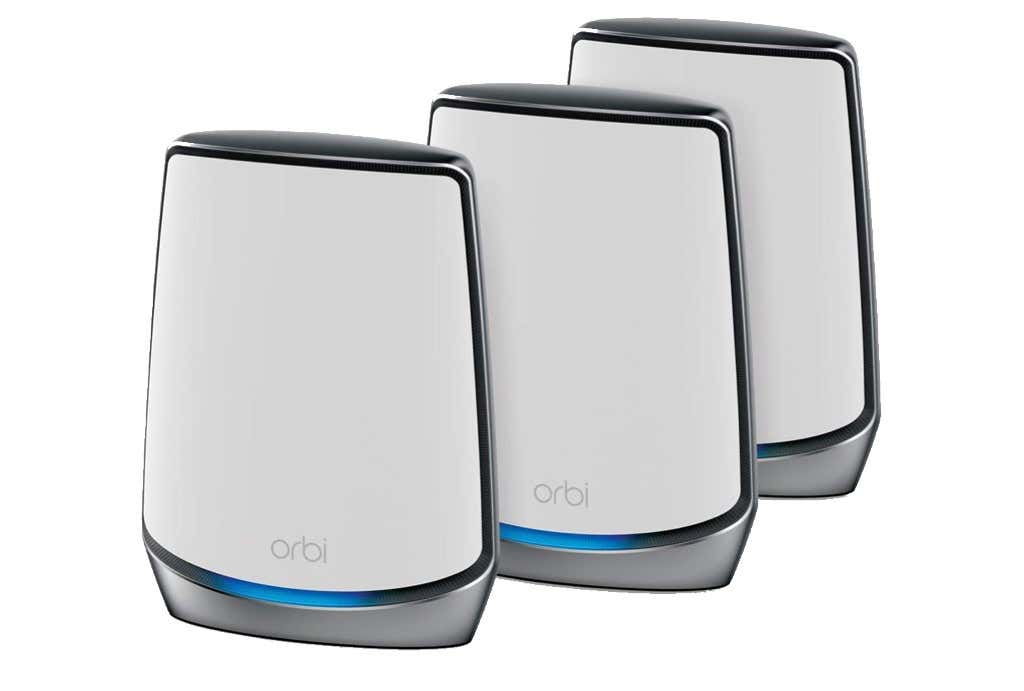Clearing Up the Meaning of “Modem”
The word “modem” is short for modulator/demodulator. It refers to a device used for dial-up internet, where data is sent over the same copper telephone lines that voice calls use. The modem takes the ones and zeroes that represent the data packets sent over the internet and turns them into sound frequencies over copper wire. It also does the reverse, listening to the sounds coming from the internet and turning them back into binary code. Modern modems used with DSL, fiber, cable, and mobile data are not modems in the term’s original sense. However, what they do have in common is converting digital data from the computer into the format of the transmission system—for example, converting electrical impulses into the light pulses used in fiber optics. The most important thing that you should know is that a modem is a device that connects you to the greater internet. It’s the transition point from your home LAN (Local Area Network) to the WAN (Wide Area Network).
What Is a “Router”?
Network data enters and leaves your home or business through the modem. Still, it’s a router that organizes the network traffic to each individual device, both between each other on the internal network and between those devices and the internet. A router’s job is complicated, and these devices are basically dedicated computers with their own CPU, memory, and operating system. You can hook up network switches, PCs, smartphones, and any other Wi-Fi or Ethernet device to a router, and it will figure out where to send each packet. Routers, at least more expensive ones, can also run network applications. For example, it can act as a VPN device or manage network-attached storage. Most routers offer at least four Ethernet ports and Wi-Fi, capable of connecting and managing dozens or even hundreds of devices. Unless you literally only have one device you want to connect to the internet through a modem, you’re going to want some type of router.
Fiber Vs. DSL Vs. Cable Vs. Cellular Modems
Although many devices share the label “modem,” they aren’t interchangeable. Most home broadband modems have an Ethernet port on your side of the connection, but they’re radically different on the internet side of things. Fiber modems connect to a fiber connection, DSL connects to copper telephone wire, cable modems connect to coaxial TV cables, and cellular modems use microwave radio signals. So, in this context, the answer to “do I need a modem?” is “yes” if you’re moving from one type of connection to another. Your old DSL modem isn’t going to work with fiber or cable connections, for example.
Sometimes the Modem Is Already There
If you move into an apartment building or home where there’s a “fiber” connection, what you may find is a plain old Ethernet port, to which you can connect any router with an ethernet “WAN” port. In other words, you don’t need to buy a modem because there’s already one installed. This is especially true in the case of fiber. People think of “fiber modems” as ethernet routers that connect to ONTs (Optical Network Terminals). That’s the device that converts Ethernet electrical signals to light pulses. Fiber routers are therefore just regular routers, but they usually have support for faster Ethernet standards. After all, if you have gigabit fiber but connect a router that only supports 100Mbps ethernet, you’d lose 90% of your internet connection’s full speed! If there’s a device with just one or two Ethernet ports and no Wi-Fi, you’re probably looking at a modem to which you can connect a router to expand its functionality.
The Pros and Cons of All-In-One Devices
If you need a modem for your connection type, since one isn’t included in the ISP plan or wasn’t already installed, you could buy a combo device containing both a modem for your broadband type and an Ethernet and Wi-Fi router. You only need an all-in-one unit like this if you don’t already have a modem, but if you do need a modem, there are a few advantages (and disadvantages) to going for a single device that does everything. On the positive side of the equation:
It’s usually cheaper than two separate devices.You only have to deal with one unified setup process.Troubleshooting is easier since there are fewer separate devices involved.
On the not-so-positive side of the equation:
If the device fails, you have no internet. With a separate modem, you could still hook up at least one device in a pinch.The router portion of the device may not be very good, stable, or support advanced functions such as network storage or VPNs.
Another major issue with using a combination device has to do with Wi-Fi footprint. These days most users want Wi-Fi to cover their entire home, and unless you live in a small apartment, a single router probably isn’t going to cut it, which is one reason you might want to have a separate modem and router.
Renting an All-In-One Device From Your ISP
Many ISPs offer an all-in-one device that contains both a router and a modem for your specific type of connection. If you can’t afford to buy your own solution and it doesn’t represent a significant extra cost to your monthly rental, there’s no harm in using these devices for a while. However, ISPs tend to bundle the cheapest devices they can with their services. If it’s an off-the-shelf router, you can read reviews about it, but sometimes these devices are modified and rebranded, making it hard to know if they’re any good. Also, be aware that some ISPs let you keep the router once it’s paid off, while others only offer a pure rental, which means you have to give the device back when you end your subscription. In general, it’s better to choose the rent-to-own option if it’s available.
Using a Modem With a Separate Router
Whether you’ve already got a modem and still need a router or you need to purchase both items, there are distinct advantages to separating the two. For one thing, you can focus your budget on your router solution and simply buy a basic modem. As long as the modem runs at the speed your connection offers, there’s really not much to look for in these devices. If you have a large home and want to spread the Wi-Fi around, you can use a mesh Wi-Fi router. These are the preferred solution, but you can use powerline ethernet and Wi-Fi extenders as well. If you use a single router, you have the option of using Wi-Fi repeaters, but these come with severe speed and latency penalties, and we can’t recommend them these days. You also have the option of connecting additional access points (or an old router set to access point mode) to extend your network’s reach without speed compromises. This is a good option if you want to save money compared to a mesh router solution or already have a few old routers in the cupboard.
Summing It Up
Let’s sum it all up down to the most important points:
Strictly speaking, you only need a modem to connect to the internet.Modems generally only offer a single Ethernet port and no Wi-Fi.You need a router to connect all the devices in your home to the modem.You can buy a modem and router combo device, but they have compromises.Mesh network routers or powerline extenders are superior to Wi-Fi repeaters and can be directly connected to a modem’s Ethernet port. Making this a better choice than a combination modem-router unit for large homes.
Now you should have a clear understanding of the different jobs modems and routers do, which you should have for your needs, and the different ways these devices can be combined.





